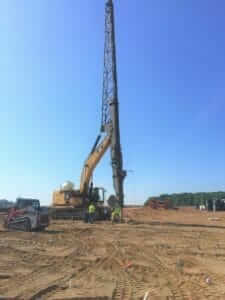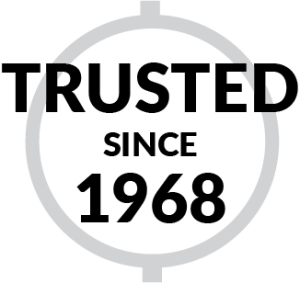On a recent project for a casino expansion, Materials Testing Consultants (MTC), provided a wick drain surcharge option with conventional shallow foundations to support the new addition of the casino. Wick drains greatly reduce the drainage path for excess pore pressure after fill placement, thereby greatly reducing the time required to consolidate (make the soil settle) the underlying clay stratum. Wick drains were installed on 6’ center-to-center spacing. Following the wick drain installation and prior to the completion of surcharge placement, seven settlement plates and rods were installed with the base of the plate installed on the existing clay grade near elevation 765. Baseline “top-of-rod” elevations were obtained and given to MTC for analysis. Based on the settlement monitoring d
What is a wick drain?
Wick drains, or Prefabricated Vertical Drains (PVD), are installed to give drainage paths for pre-water in soft compressible soil. The wick drain design provides a greater vertical discharge capacity than a 6-inch diameter sand column. The prefabricated core is tightly wrapped in a geotextile filter jacked spun bonded polypropylene which has a very high-water permeability while retaining the finest soil particles. Both the core and the geotextile filter jacket have high mechanical strength, a high degree of durability in most environments, and high resistances to chemicals, micro-organisms, and bacteria.
How are wick drains installed?
The drain is fed down a hollow mandrel mounted on an excavator or crane mast. A vibratory hammer or static method is used to insert the mandrel to design depth. The mandrel is then removed, leaving the wick drain in place. The wick drain is cut at the ground surface; the mandrel then moves to a new location and repeats the process.
If you think you have a project where wick drains could be used or would like to learn more about our services,
Please contact us, if you have a project where wick drains could be used or if you would like to learn more about our services.


